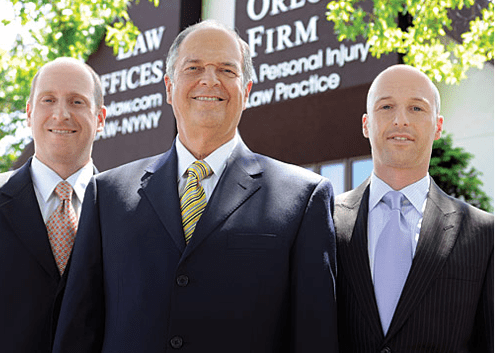How Do You Preserve Evidence After an Accident?
Quick Answer: After an accident in NYC, immediately preserving all relevant evidence is critical. This includes taking photos and videos, securing physical items, gathering witness details, and keeping all related documents like medical records and incident reports. Prompt evidence preservation strengthens your case and protects your right to compensation. For help securing vital evidence, contact our personal injury lawyers at (646) 647-3398 for a free consultation.
Why Preserving Evidence is Crucial for Your Claim
After an accident in New York City, the moments following the incident are chaotic. Amidst the shock and the immediate need for medical attention, it’s easy to overlook something incredibly important: preserving all relevant evidence. This isn’t just a helpful step; it’s absolutely crucial for protecting your rights and building a strong personal injury claim.
Evidence is the bedrock of any successful accident claim. It provides concrete proof of what happened, who was at fault, and the extent of your injuries and damages. Without it, your claim often becomes a “he said, she said” scenario, which insurance companies and opposing attorneys are eager to exploit. They’ll look for any lack of documentation to dispute your account or minimize their payout.
Think of it this way: details fade, memories become hazy, and accident scenes change. Promptly preserving evidence ensures that critical information is captured while it’s fresh and unaltered. This helps establish a clear timeline, demonstrates the conditions that led to your injury, and directly supports the compensation you deserve for medical bills, lost wages, and pain and suffering.
For immediate help and a free consultation, call The Orlow Firm today at (646) 647-3398.
Types of Evidence You Need to Preserve
After an accident in New York City, it’s not always obvious what counts as “evidence.” But nearly anything related to the incident and its aftermath could be vital for your claim. It’s crucial to understand the different categories of evidence so you know what to look for and preserve.
Here are the key types of evidence you need to secure:
Physical Evidence
This refers to tangible items directly involved in or affected by the accident.
- Damaged Property: Keep any clothing, personal belongings, or objects that were damaged in the accident. For example, torn clothing from a slip and fall, a broken helmet from a bicycle accident, or a damaged phone from a pedestrian incident.
- Vehicle Debris/Parts: If it’s a car accident, secure any detached vehicle parts, broken glass, or other debris from the scene if it’s safe and permissible.
- Hazardous Conditions: For slip and falls, if possible and safe, preserve or carefully document the actual hazard that caused the fall, such as a broken step, a torn carpet, or the liquid that caused you to slip (e.g., in a container or by photographing it with a ruler).
- Defective Products/Equipment: If your injury was caused by a faulty product or equipment, do not discard or attempt to repair it. Preserve the item exactly as it was after the accident.
Visual Evidence (Photos & Videos)
This is often the most immediate and compelling form of evidence.
- Accident Scene Photos/Videos: Take comprehensive pictures and videos of the entire scene from multiple angles. Include wide shots for context and close-ups of specific details. Capture vehicle positions, road conditions, traffic signals, crosswalks, construction zones, or premises hazards (e.g., spills, poor lighting, uneven surfaces, broken handrails).
- Your Injuries: Photograph all visible injuries (cuts, bruises, swelling) as soon as possible after the accident, and continue to document them as they heal or worsen over time.
- Property Damage: Take detailed photos of any property damage, including vehicles, personal items, or structures.
- Weather and Environmental Conditions: Document the weather (rain, snow, ice) and lighting conditions (day, night, dim lighting) at the time of the accident.
Documentation & Records
Written or electronic records are fundamental to establishing facts and damages.
- Medical Records: This is paramount. Keep every document related to your medical care: emergency room reports, doctors’ notes, diagnostic test results (X-rays, MRIs), physical therapy logs, prescriptions, and all medical bills.
- Police Reports/Incident Reports: Obtain copies of any official reports filed, such as police accident reports (MV-104A), property incident reports (for slip and falls), or workplace accident reports.
- Witness Information: Secure full names, phone numbers, and email addresses of any witnesses.
- Personal Journal/Notes: Maintain a detailed private journal documenting your pain levels, symptoms, daily limitations, emotional impact, and how the injury affects your ability to work or perform daily tasks. Note dates of medical appointments and communications.
- Lost Wage Documentation: Keep pay stubs, tax returns, and any documents proving lost income or impact on your earning capacity.
Digital Evidence
In today’s world, digital footprints can reveal crucial information.
- Text Messages/Emails: Preserve any relevant communications about the accident, your injuries, or related events.
- Dashcam/Security Camera Footage: If available, secure any dashcam footage from vehicles involved or nearby security camera footage from businesses or traffic cameras. This often requires quick action as footage can be deleted quickly.
- Social Media: Be mindful of your own social media. Do not delete existing posts, but avoid making new ones about the accident or your activities. Your attorney can advise on managing your accounts during a claim.
Preserving these various types of evidence immediately and meticulously can significantly strengthen your personal injury claim and increase your chances of receiving the compensation you deserve. For immediate help and a free consultation, call The Orlow Firm today at (646) 647-3398.
How to Preserve Evidence Safely
Preserving evidence after an accident in New York City is critical, but it’s equally important to do so safely and correctly. Improper handling or risky actions could jeopardize your health or the evidence itself. Always prioritize your safety and follow these guidelines.
Prioritize Your Safety at the Scene
Your personal safety comes first. Never put yourself in harm’s way to collect evidence. If you’re on a busy street, near unstable structures, or in a hazardous environment (like a spill or active construction zone), only collect evidence if it’s safe to do so. If not, note what you can from a safe distance and contact emergency services and your attorney promptly.
Document Without Disturbing
When taking photos or videos, aim to capture the scene and evidence as it exists immediately after the accident, before anything is moved or altered.
- Don’t Touch or Move Evidence: Unless absolutely necessary for safety (e.g., moving a vehicle out of traffic, or moving to a safe location after a slip and fall), avoid touching or moving any objects or debris related to the accident. This helps maintain the integrity of the scene for official investigations.
- Capture the Full Context: Before focusing on close-ups, take wider shots to show the overall scene. This provides context for where specific pieces of evidence were located.
Use Your Smartphone Effectively
Your smartphone is a powerful tool for immediate evidence collection.
- Photos and Videos: Use your phone’s camera for both still photos and short videos. Videos can capture movement, sounds, and the overall atmosphere of the scene.
- Timestamps: Ensure your phone’s camera settings have date and time stamps enabled. This provides crucial verification of when the evidence was collected.
- Charge Your Phone: Keep your phone charged, as you’ll need it for calls, photos, and notes.
Secure Physical Items
For any physical evidence like damaged clothing, equipment, or personal belongings, secure them properly.
- Store Safely: Place items in a sealed bag or container to protect them from further damage or contamination.
- Avoid Cleaning or Repairing: Do not attempt to clean, repair, or alter any damaged items. Their damaged state is part of the evidence.
- Document Storage: Make a note of where and how you’re storing the evidence.
Organize Your Documentation
Consistency and organization are key for all your records.
- Centralized Folder: Create a dedicated physical folder or digital file to keep all accident-related documents: police reports, medical bills, doctors’ notes, prescription receipts, repair estimates, and a personal journal.
- Digital Backups: Back up all photos, videos, and digital notes to a cloud service or external hard drive to prevent loss.
- Journal Details: In your personal journal, record specific dates, times, and details of your pain, symptoms, medical appointments, and any conversations you have about the accident (who you spoke to, what was discussed).
By meticulously and safely preserving all relevant evidence, you significantly strengthen your ability to prove your case and secure the compensation you deserve. For immediate help and a free consultation, call The Orlow Firm today at (646) 647-3398.
Frequently Asked Questions About Preserving Evidence After an Accident
Understanding how to preserve evidence effectively can significantly impact your personal injury claim. Here are answers to common questions about evidence preservation after an accident in New York City:
- Why is it so important to preserve evidence after an accident? Preserving evidence is crucial because it provides concrete proof of what happened, who was at fault, and the extent of your injuries and damages. Details can fade, memories can become hazy, and accident scenes can change. Prompt evidence preservation ensures critical information is captured while it’s fresh and unaltered, strengthening your claim.
- What are the main types of evidence I should focus on preserving? You should focus on physical evidence (like damaged clothing or vehicle debris), visual evidence (photos and videos of the scene, injuries, and property damage), documentation and records (medical records, police reports, personal journals), and digital evidence (relevant messages, dashcam footage, or security camera footage).
- How should I safely preserve physical evidence from the accident scene? Prioritize your safety first. If it’s safe, collect physical items like damaged clothing or detached vehicle parts. Store them in a sealed bag or container and avoid cleaning, repairing, or altering them, as their damaged state is part of the evidence. Make a note of where and how you’re storing them.
- What kind of documentation and records are most important to keep? Keep all medical records (ER reports, doctor’s notes, test results, bills), official reports (police, incident reports), witness contact information, and a personal journal detailing your pain and limitations. Also, save any documentation of lost wages.
- Can an attorney help me with evidence preservation, especially for complex cases? Yes, absolutely. An experienced personal injury attorney can quickly dispatch investigators to the scene, send preservation letters for surveillance footage, subpoena crucial records (like cell phone data or traffic light sequencing), and engage experts to analyze complex evidence. They ensure all vital evidence is collected, properly secured, and strategically used for your claim.
For immediate help and a free consultation, call The Orlow Firm today at (646) 647-3398.
The Role of an Attorney in Evidence Preservation
While taking immediate steps to preserve evidence is crucial, the process can quickly become overwhelming, especially when you’re dealing with injuries and the complexities of the legal system. In New York City, an experienced personal injury attorney plays a vital role in ensuring that all crucial evidence is not only collected but also properly secured, analyzed, and used to build the strongest possible case.
Here’s how The Orlow Firm can assist with evidence preservation:
- Immediate Investigation and Scene Preservation: We can swiftly dispatch investigators to the accident scene, often within hours, to document conditions before they change. This includes taking professional photos and videos, obtaining measurements, and identifying environmental factors that might be overlooked by an untrained eye.
- Securing Surveillance Footage: Many accidents in NYC occur near businesses or traffic cameras. Surveillance footage is often time-sensitive and can be overwritten quickly. An attorney can send immediate preservation letters to businesses or government agencies, legally compelling them to retain critical video evidence.
- Identifying and Interviewing Witnesses: We know how to effectively locate, interview, and obtain formal statements from witnesses. Their accounts can be critical corroborating evidence.
- Subpoenaing Records and Data: We have the legal authority to subpoena records that you might not be able to access, such as cell phone records (if relevant), vehicle black box data, traffic light sequencing data, or maintenance logs for property and equipment.
- Expert Analysis: We can engage experts (e.g., accident reconstructionists, engineers, medical specialists) who can analyze complex evidence, such as vehicle damage, skid marks, or structural defects, to determine causation and liability.
- Protecting Physical Evidence: We advise on the proper storage and chain of custody for any physical evidence, ensuring its integrity is maintained so it remains admissible in court.
- Organizing and Managing Documentation: We help you gather, organize, and manage all essential documents, from medical records and bills to lost wage statements and police reports, ensuring nothing is missed and everything is accessible for your claim.
By partnering with a skilled attorney, you ensure that every piece of relevant evidence is discovered, preserved, and strategically used to support your claim for compensation. This allows you to focus on your recovery, confident that your case is being handled by experts.
For immediate help and a free consultation, call The Orlow Firm today at (646) 647-3398.










